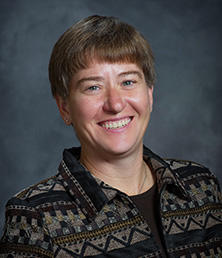While ethanol and biodiesel fuels are among the most common renewable energy revenue sources accepted into the California Air Resources Board (CARB) program for Low Carbon Fuel Standard (LCFS) credits, dairy producers across the U.S. are taking notice of the benefits these credit opportunities pose for biomethane suppliers as well.
California has successfully achieved a 5% decrease in the carbon intensity of transportation fuel (between 2011 and 2018) with its LCFS program. It also reported that the carbon intensity value of California’s natural gas vehicle portfolio in the Low Carbon Fuel Standard program was below zero for the first time, all due to renewable natural gas. Dairy producers who have taken part in this program have also reported effective revenue gains.
Credit Opportunity for Dairies is Proving Effective and Sustainable
“We’ve seen a noticeable uptick in participants, as well as peaked interest, from our dairy producers seeking diversified revenue opportunities,” says Maxson Irsik, CPA, animal Ag consultant with K·Coe Isom. “There’s no doubt it’s a hot commodity right now for any dairy supplying in or to California – and similar programs are being set up in Oregon and other states to help reduce their emissions. These types of credits have helped many businesses to create a diversified revenue stream that they can also feel good about. It’s a win-win.”
According to an AgSTAR report, in 2017 an estimated 250 manure anaerobic digester biogas recovery systems were in operation at commercial livestock facilities in the United States. The report stated that the full potential to provide renewable energy is much greater: an estimated 8,100 U.S. dairy and swine operations could support biogas recovery systems.
The LCFS program is proving to be a large crediting opportunity for these operations. What once was seen as an avenue with too many hurdles – critics said digesters are too expensive and wouldn’t work – is proving to be both effective and sustainable for dairies looking to diversify revenue.
Keeping Up with an Evolving CARB Program
The CARB program itself has undergone a rapid transformation since it began in 2011. To help CARB oversee the LCFS program, ensuring that all deficits are countered by credits and that reporting is accurate, it has enlisted the help of third-party verification firms. Through a comprehensive accreditation program, firms like K·Coe Isom have become certified to validate the carbon intensity of fuel producers, and verify that all compliance standards are met.
There are some complexities within this process to be aware of when determining if your operation is the right fit, and how best to move forward with the process. While the LCFS program is here to stay, benchmark emissions rates change over time in addition to compliance and reporting requirements. It can be challenging to stay current with evolutions to the LCFS, which is key to optimizing returns on clean fuel development projects and clean fuel usage. But the good news is that CARB has enlisted accredited firms across the nation to help producers through all of it, and ensure they can produce revenue gains.
For questions or guidance regarding the LCFS process and qualified program candidates, feel free to reach out to K·Coe’s LCFS-accredited advisors.










